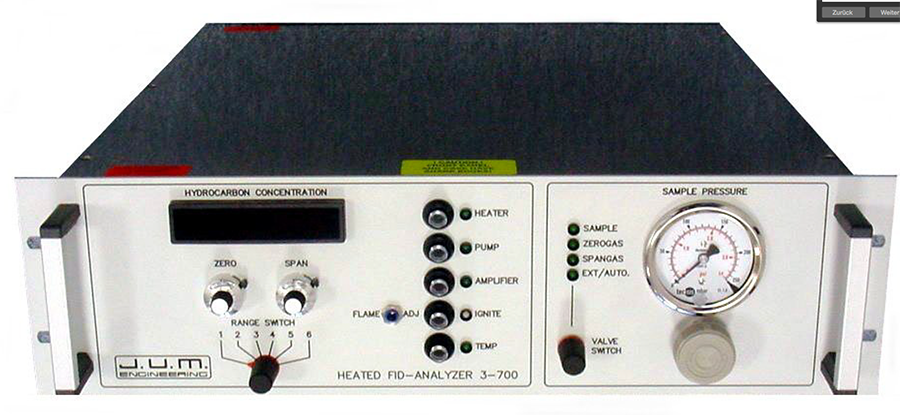The J.U.M Model 3-700 FID is designed to be installed directly upstream of a FTIR analyzer to continuously measure the total concentration of hydrocarbons within a gaseous sample. All controls which allow to calibrate the FTIR or FID individually are built in. Sources can be ambient air, exhaust gases from a combustion process, stack emissions, from any type of an industrial vent, from an internal combustion engine, or from any other emission containing hydrocarbons. The Model 3-700 complements an FTIR analyzer with full THC monitoring capabilities.
QAL 1 (EN 14 181 and EN ISO 14956) and EN12619 regulations. They also fully complies with USEPA Method 25A and Method 503.It can be used as a table top instrument but is ideally suited to be integrated in CEMs.
Features:
- Made in Germany
- All critical components including pumps, sample filters, detectors and main electronics are manufactured in house
- Fully heated to 190 degree C
- Equipped with zero and span gas inlets to be selected from internal selector or from remote sources. Auto cal check optional
- Typical sensitivity 0.01 ppm CH4
- 21/2 digit LED display. Optional direct concentration display to read up to 3 decade ranges without range change
- Internal sample pump and air pump
- Internal combustion air supply (No external air cylinder needed)
- Very low fuel consumption (less than 20 cc/min @ 100% H2)
- Back purge or disposable sample filter
- Automatic ignite capability (optional)
- Automatic flame out alarm contact and fuel shut off
- Sample pressure regulator is not in contact with sample gas
- Multiple range capability, 5 selectable ranges are standard
- 19″ rack mount unit, only 132 mm high
Applications:
- Stack gases (CEM) and all other Environmental and process applications
- Air and gas scrubber efficiency
- Process chemical gas analysis
- Personnel safety
- Solvent recovery
- Catalytic converter and thermal combustion
- Automotive and engine emissions

